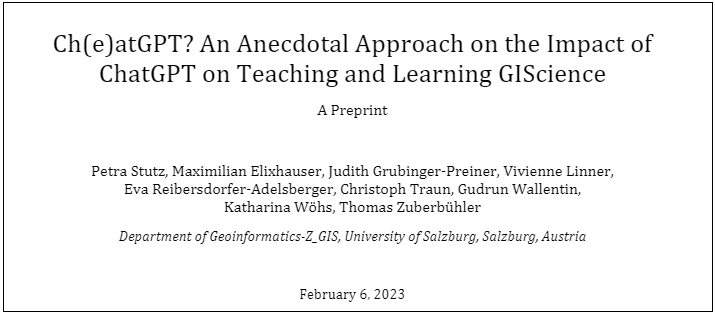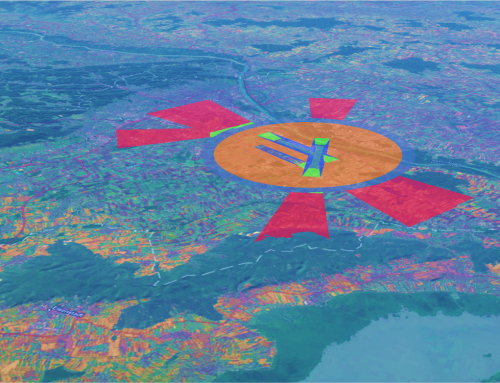How to Teach in the Age of ChatGPT:
A Survival Guide

What if I told you that ChatGPT can complete UNIGIS assignments in under five minutes? What are your feelings? Excitement, scepticism, or even unease? We as UNIGIS team experienced all these feelings at once when we learned about ChatGPT’s capabilities. We realised that we needed to react quickly to stay ahead of the curve and explore how we can leverage this technology to improve the learning experience for our students.
What is ChatGPT?
ChatGPT is an advanced language model developed by OpenAI that uses artificial intelligence (AI) to engage in text-based conversations with humans. It is based on the GPT (Generative Pre-trained Transformer) architecture and has been trained on a massive dataset of text from the internet. As a result, it is able to generate human-like responses to a wide range of prompts and queries. It can be utilised for a variety of applications, such as text summarisation, programming, dialogue generation, chatbots, and language translation.
How does it affect learning and teaching in our GIS distance learning program?
At first, the idea of a new technology that could potentially facilitate cheating by allowing students to copy and paste assignment texts into a language model and receive instant answers seemed overwhelming. However, we soon realised that we should not consider this as a threat to education, but rather as a paradigm shift that requires us to adapt to it. These emerging technologies will undoubtedly have an impact not only on how we learn, but also on how we teach.
It’s important to note that the competencies that are acquired in the UNIGIS distance learning program cannot be replicated by a language model. Our ability to think spatially and solve spatial problems using GI-Software is what distinguishes us from other professions. However, there are courses and assignments that fall within the purview of ChatGPT’s capabilities. If ChatGPT can effortlessly solve these assignments, we must re-examine what we expect Geoinformatics students to learn and comprehend, and devise strategies to address this issue.
How do we deal with the situation?
One of our initial priorities was to establish methods for detecting whether students utilised an AI to complete their assignments. To supplement conventional plagiarism checks, we will use recently developed plagiarism detection software that can differentiate between human-written and AI-generated texts. Additionally, we are considering a novel evaluation approach that involves oral assessments via video conferences. There, students are required to discuss their assignment submissions with the instructor as an adjunct to the current evaluation procedure.
Another critical realisation for us was the need to reassess the learning objectives of our courses. The importance of memorisation as a learning objective will continue to decrease. Instead, learning objectives will shift towards a strong integration of AI, especially for “applying”, “analysing”, and “creating”. We see the learning objective “evaluation” as crucial. Education will need to address the responsible use of AI and equip students with the ability to evaluate the plausibility and veracity of AI results. These changes have the potential to allow students to produce more elaborate outcomes in a shorter time, which is expected to motivate students and, ultimately, benefit society.
You are interested in learning more about this topic?
We conducted a case study in which ChatGPT completed assignments in the course ” Basics of Application Development”. Did ChatGPT receive a passing grade? And, did the submission raise any suspicion for the instructor? Read our Short Paper, which is available via the following link:
Ch(e)atGPT? An Anecdotal Approach on the Impact of ChatGPT on Teaching and Learning GIScience
Photo Credit: Adobe Stock







